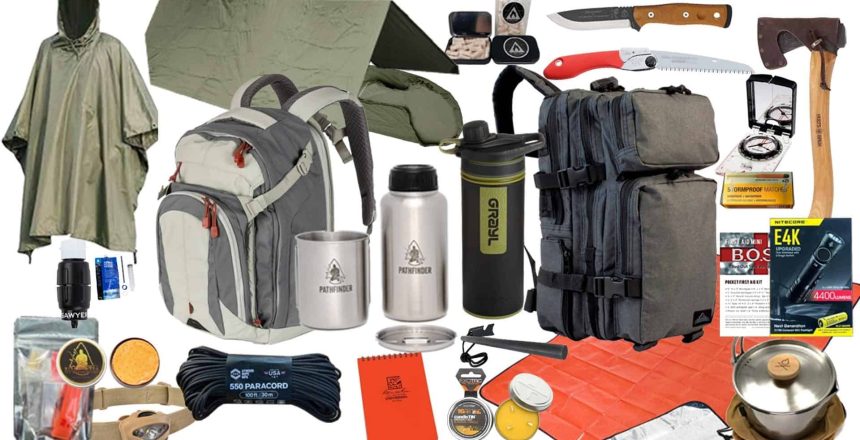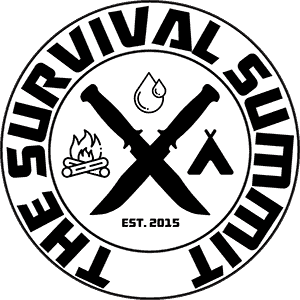The Truth about Bug Out Bags

The Truth about Bug Out Bags
Which bag is right for me?
Many people associate a “Bugout Bag” with a bag that means you’re leaving town to live off the land or get out of town for good. A “Bugout Bag” is a term used to describe having gear you can carry in a backpack that covers all your needs; Shelter, Water, Fire, Food, Signaling, Navigation, Knives and Tools, Medical, etc.
When we as Survival Summit talk about a “Bug Out” Bag, all we are saying is that gear is for bugging out of a situation, or getting “off the X”, and trying to get home, or to an alternate location.
The industry has come up with many different names; Bug out bag, Get home bag, INCH bag, and so on. Why? Why would you carry less gear in a smaller “get home” bag if you have no idea what’s going to happen, where you’re going to be if something does happen, and whether or not you’re going to be walking or driving? Most “Get Home” bags we’ve seen are inadequate.
Would you even know how long it will take you to get home? If you are in an unfamiliar area, do you have street or topo maps of that area? Don’t think that you can just use your phone. What if the battery dies, you lose it, or the signal is down?
What if your vehicle becomes inoperable? What if the roads are impassible? If you have a mountain bike in your SUV or truck, what if it’s Winter and there is too much snow on the ground? There are so many variables, so why would you limit yourself to different types of bags that may not cover all of your needs for at least 3-5 days?
Why would you carry an I.N.C.H. bag (I’m never coming home) if you don’t know what’s going to happen or where you’ll be? It may be cumbersome, and you may not be able to carry it on foot for very long if you have to.
For example, if your I.N.C.H. bag has a large Axe, why would you take that pack to work daily? You’re not going to be making a cabin in the woods straight from work unless your entire P.A.C.E. plan failed before it even started, so why carry the extra weight? Some people have fishing poles, traps, 10+ lbs. of food, and more in their Bug Out bag. We believe that is unnecessary unless you did no pre-planning at all.
We prefer to stick with a backpack weighing around 16-25 lbs. that covers all of our needs for approximately one week and utilize cache locations along our routes. We live in the Northeast, so the heavier side of 25 lbs. is if it’s Wintertime and we are carrying a wool blanket, an SF sleeping bag, and a more durable tarp.
We also like to keep our Winter gear and main pack in a small ice fishing sled, so it’s easier to get from Point A to B carrying extra Winter gear. In the late Spring and Summer, 14-16 lbs. is typically what we have in our packs, which includes all categories.
We also carry a fair amount of gear as EDC (everyday carry) so that if we get separated from our main pack, we will still be in good shape until we can get to our supplemental gear in other locations.
Our List of Importance
P.A.C.E. Planning
Proper Training
Adequate Gear
(Click HERE for our new Gear Catalog PDF)
(Click HERE for our Recommended Gear List PDF)
What is the Plan?
If you have a proper P.A.C.E. Plan (Primary, Alternate, Contingency, Emergency), your Primary will be your home, where your supplies are. You would not be leaving home unless you didn’t have a choice. Some exceptions to this might be if a large scale High Altitude EMP shut down the entire U.S. power grid. If the major transformers were destroyed, it could take months to get them replaced. In this type of potentially society ending event, your first option may need to be going to your alternate or contingency location immediately, especially if you’re living in a large city. Many other things could drive you to your alternate or contingency locations, such as natural disasters, or even rioting, depending on where you live. However, home should still be your primary location.
Where are your alternate and contingency locations? Well, that’s up to you. How much pre-planning have you done? If you need to leave your primary location, do you have family and friends in other locations? Do you have supplies there as well as at home? Are they aware that their location is part of your P.A.C.E. Plan? Do you have resupply caches along your routes to these other fallback locations? Do you have TOPO maps with those cache locations discreetly marked so you can find them?
Most people should be able to pack a backpack with 15-25 lbs. of gear that will cover their needs for at least one week. Of course, if it’s Wintertime, you’ll have extra gear that will increase the weight of your equipment, but that is unavoidable if you’re in a location that gets below freezing. (Click HERE for our Winter Preparedness Vehicle Kit Blog)
With proper planning and adequate training, as well as rehearsing your different plans whenever you’re able, you should be able to travel relatively lightly and move more quickly to get home or to one of your other locations.
What about my Family?
What about your family? Does your family have a way to communicate with each other in the event of an emergency? Does everyone in your family have their own “Bug Out” bag to provide for their needs until they meet up with you? Do they know where to meet you?
Think of it like a fire drill or home safety plan. If your family doesn’t know what to do if there’s a fire, that is poor planning. They should know how to get out, where to meet, and so forth. Preparedness planning is the same concept, just with a lot more details. You should also be training with your family whenever you have extra time. Training is so much more critical than gear, in our opinion.
I have my truck ready to go!
You can own all the gear in the world and have a pickup truck, SUV, or car filled with Pelican cases of gear, but what if you can’t take that vehicle for whatever reason? How good is all that gear now if you have no way to transport it?
We are not saying you should not have a plan to move more significant amounts of food or gear in a vehicle, but that cannot be your only plan. You should still have stocked up food, water, ammo, medical, etc., in your other P.A.C.E. locations and be utilizing caches.
After all, “By failing to plan, you are preparing to fail.” If you have the money to have cases of gear at the ready to be placed in a vehicle, that’s great, but not if you haven’t considered what would happen if you cannot take that vehicle and did not make any other plans.
Why are caches so important?
Let’s say you have an amazing P.A.C.E. Plan, the perfect Bug Out bag and gear, and you have been training like a maniac, and you are READY if something happens. What happens if you lose your Bug Out bag on day one because someone stole your vehicle, or you get robbed at gunpoint, and your pack is taken? What then? Wouldn’t it be great to have a supplemental pack in a cache location?
What happens if you cannot get home for a week or two or longer? Wouldn’t it be ideal to have extra food in a cache that you can access along your routes? Yes, having these types of setups can get expensive and be a lot of hard work, but they may become necessary for your survival, so if you’re able to do it, you should.
Don’t have a lot of money? You can create a much cheaper Bug Out bag setup for cache locations by getting gear at Walmart or your local dollar store. Many videos on YouTube show that kits can be put together relatively cheaply by bargain shopping. However, we do not recommend using low-budget gear when putting together your main Bug Out bag.
Conclusion
- Plan Plan Plan! It’s all about planning for every possible contingency
- Train as much as possible to learn new skills as well as hone your existing skillsets
- Have a quality backpack with the essential gear to provide for your needs
- Be sure you have supplemental gear based on your location
- Set up Cache Locations
Click HERE for our latest Recommended Gear list.
Want to Build your own Bug Out Bag? You can do that HERE.


